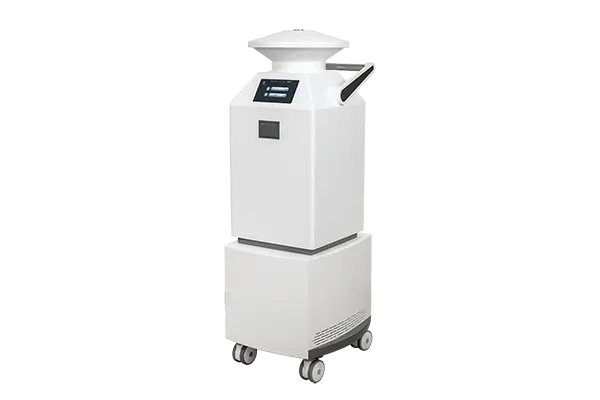Space disinfection in medical institutions, especially in high-risk areas such as wards, operating rooms, intensive care units (ICUs), outpatient halls, and corridors, plays a vital role in reducing the number of pathogenic microorganisms in the air and cutting off transmission routes. These areas often gather large numbers of susceptible people, such as patients, caregivers, and medical staff, so once the concentration of pathogens in the air increases, the risk of cross-infection may increase significantly.
Disinfection of surfaces in medical institutions should not be neglected either. Object surfaces are important carriers of pathogenic microorganisms, such as door handles, bed rails, and medical equipment. These items are frequently touched during use and are easily contaminated by pathogens. Once these contaminants are touched by the hands of patients or medical staff, the disease may be transmitted through hand-to-mouth, hand-to-nose, hand-to-eye, and other pathways.
Using space disinfection machines to disinfect medical unit spaces and surfaces is an efficient and quick solution. Space disinfection machines on the market can be mainly divided into ultraviolet disinfection machines, ozone disinfection machines, etc., and hydrogen peroxide compound factor disinfection machines, which have attracted much attention in recent years.

Disinfection principle:
The ultrasonic atomization device atomizes hydrogen peroxide disinfectant with a specific concentration to produce high-concentration nanoscale disinfection molecules, which then pass through ozone, coarse-efficiency filtration devices, photocatalyst devices, and ultraviolet devices. Through this composite method, the air and object surfaces in the space can be sterilized in a multi-directional three-dimensional surrounding cycle at the same time, which can significantly improve the disinfection efficiency and effectively cut off the source of infection. After the disinfection is completed, the disinfection data can be printed through the intelligent audio prompt of the microcomputer control system.
Functional advantages:
1. Five-in-one composite factor disinfection: The combination of gas + liquid + light + filtration adsorption + capture of multiple disinfection factors improves the singleness of the disinfection factors of disinfection products on the market, making the disinfection effect better, safer, and more thorough, making the surface of objects cleaner after disinfection, and the space environment fresher and safer.
2. Diversified active and passive disinfection methods: You can also choose the appropriate disinfection method according to different disinfection needs.
3. High disinfection coverage, wide range, and large space: proactively attack, able to cover the infection area without holes, and effectively disinfect 200m³ of space.
4. The disinfection factors can act independently without interfering with each other: if one disinfection factor fails, other disinfection factors can still work normally and still meet the disinfection effect. Therefore, it is safer and more reliable to use.
5. Voice prompt printing function: After disinfection is completed, the microcomputer control system will give an intelligent audio prompt, and you can choose to print the disinfection data for the user to sign, retain, and trace.
6. Color touch screens of various sizes: Color touch screens of various sizes can be selected according to usage requirements.
7. One-button start, quick operation: The equipment can be started with one button, which intelligently simplifies the operation process, is convenient and fast, and meets the disinfection needs of different scenarios.
Regular disinfection of spaces and surfaces in medical institutions is an effective way to cut off transmission routes and reduce the risk of infection. By adopting a comprehensive prevention and control strategy, the risk of hospital-acquired infection can be effectively reduced to ensure the health and safety of patients and medical staff.